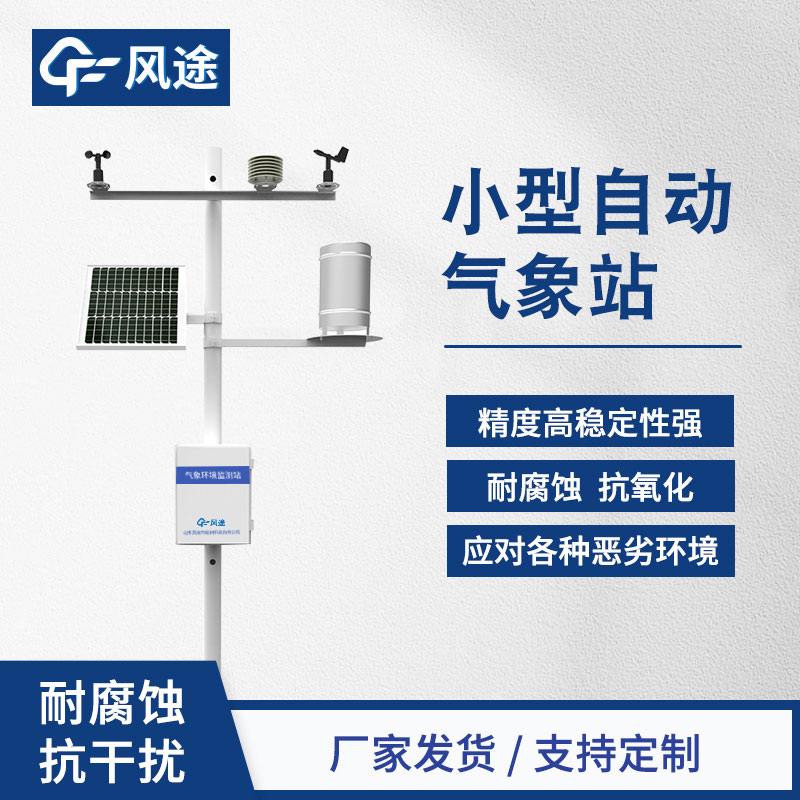Shandong Fengtu IOT Technology Co., Ltd
Sales Manager:Ms. Emily Wang
Cel,Whatsapp,Wechat:+86 15898932201
Email:info@fengtutec.com
Add:No. 155 Optoelectronic Industry Accelerator, Gaoxin District, Weifang, Shandong, China

Sales Manager:Ms. Emily Wang
Cel,Whatsapp,Wechat:+86 15898932201
Email:info@fengtutec.com
Add:No. 155 Optoelectronic Industry Accelerator, Gaoxin District, Weifang, Shandong, China
time:2024-02-02 17:22:44 source:Weather Station viewed:659 time
With the rapid development of science and technology, modern meteorological and environmental monitoring systems, as the core of the operational meteorological monitoring system, are of great significance in enhancing the level of public meteorological services and improving the accuracy of meteorological forecasts. These advanced monitoring systems have benefited from advances in microelectronics technology, computer technology, satellite technology and materials science to automate meteorological observation. The application of this technology not only simplifies the observation process, but also significantly improves the detection accuracy and maintainability of meteorological monitoring, providing the public with more accurate meteorological services.
The meteorological monitoring system consists of several key components, starting with the sensors of the automatic meteorological monitoring device. The main task of these sensors is to detect various meteorological elements, with each sensor specialising in monitoring a particular meteorological element. It is worth noting that the sensors of the automatic meteorological monitoring device are not fixed, but can be flexibly selected according to the actual needs to meet different monitoring needs.
Next are the collector and transmission module. The core responsibility of these two is to collect and transmit meteorological data. The collector is responsible for collecting meteorological data from the sensors, while the transmission module sends these data to the relevant destinations. Through this combination, the data of meteorological elements are collected and transmitted efficiently.
Finally, there is the weather station support. The main function of this part is to support the automatic meteorological monitoring device, observation instruments and other parts of the sensors. Without this support, the whole meteorological monitoring system may not be able to operate stably, thus affecting the accuracy and reliability of the data. With the rapid development of science and technology, modern meteorological environmental monitoring systems, as the core of the meteorological monitoring business system, are of great significance in enhancing the level of public meteorological services and improving the accuracy of meteorological forecasts. These advanced monitoring systems have benefited from advances in microelectronics technology, computer technology, satellite technology and material science to automate meteorological observation. The application of this technology not only simplifies the observation process, but also significantly improves the detection accuracy and maintainability of meteorological monitoring, providing the public with more accurate meteorological services.
The meteorological monitoring system consists of several key components, starting with the sensors of the automatic meteorological monitoring device. The main task of these sensors is to detect various meteorological elements, with each sensor specialising in monitoring a particular meteorological element. It is worth noting that the sensors of the automatic meteorological monitoring device are not fixed, but can be flexibly selected according to the actual needs to meet different monitoring needs.
Next are the collector and transmission module. The core responsibility of these two is to collect and transmit meteorological data. The collector is responsible for collecting meteorological data from the sensors, while the transmission module sends these data to the relevant destinations. Through this combination, the data of meteorological elements are collected and transmitted efficiently.
Finally, there is the weather station support. The main function of this part is to support the automatic meteorological monitoring device, observation instruments and other parts of the sensors. Without this support, the whole meteorological monitoring system may not be able to operate stably, thus affecting the accuracy and reliability of the data.

Soil moisture monitoring system is like hiring a professional "doctor" for the land. Through sensors and other advanced equipment, it monitors soil moisture, temperature and other information in real time and accurately, helping people to understand soil conditions and providing a scientif...
Weather forecasts provide timely information on the weather in the coming days. In the case of typhoon and rainstorm forecasts, precautions need to be taken in advance, and as modern agriculture continues to develop, the agro-meteorological environment is increasingly being taken into account. Espec...
What is a ducted air speed sensor?Firstly, let's understand why ducts need to measure wind speed. In many industrial and construction applications, ducts are commonly used to transport gases or liquids such as oil, gas, water, air and other chemicals. In these applications, the wind speed inside...
Online water quality total hardness monitor utilizes the ion-selective electrode method for continuous online monitoring of total water hardness and chloride ion content. The monitoring results can be used to control the start and stop of water softening equipment, making it suitable for applications suchs as softened water output, boiler feedwater, and circulating cooling water, achieving automated operation and real-time data feedback....